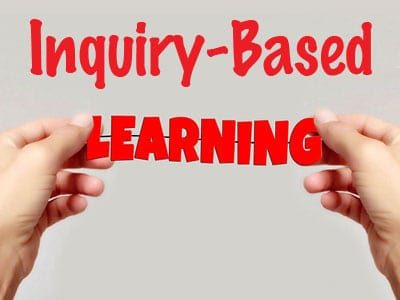
This week in EDCI 335, I’m going to discuss the characteristics of Inquiry-Based Learning (IBL).
There are various instructional approaches such as direct instruction, open pedagogies, and inquiry-based learning. The diversity of instruction approaches allows learners to justify their learning platform when adapting knowledge. In the Behaviourists theory, educators provide all learning information and a step-by-step process to learners, transfer the knowledge from educators to learners by repeatedly correct and respond targets. The role for learners in this site is to memorize what they have learned. Different from Behaviourists theory, the Inquiry-Based Learning instructional approach as in Constructivist theory, involves learners in their learning. Learners construct their understanding and knowledge of the world through experiments and reflections. Educators are passive and have fewer responses compare to Behaviourists theory. Their role is to develop learners by questioning and guiding them in their learning states and adjust learners’ needs. In contrast, learners actively ask a question and investigate solutions, discover new knowledge when gathering information, discuss discoveries and experiences.

Here is a video about the benefit of IBL:
This video explains how IBL benefits learners. Learners improve their understanding and attitude when knowledge is related to their living. Questioning, formulating, and investigating by themselves and cooperative learning can develop learners a deeper understanding of the content due to higher-order thinking. Eventually, learners become more adept at applying knowledge to what they have learned to other situations.
For our team project, we are going to teach how to ‘Whip Cream’. Consider not all students know how to whip cream properly, IBL doesn’t seem to be a good approach to our topic. First of all, the failure of whip cream considers food wastes and pollutes our environment. Learning how to whisk a perfect whip cream can’t be done at one go. To whip cream up from heavy cream, all equipment must remain clean and dry. Cleaning up the equipment to restart the process will need lots of paper towels/ dry cloths, dish soap/ detergent, and water. Even using nontoxic detergent when cleaning, it is still concerning. In addition, learning how to whip cream is not like learning how to paint: Whip cream not only has a short expiry date but also has a temperature requirement. When handling cream, they require extra attention. Second of all, whipping cream is a formula from food science that unable to rewrite. Whip cream is sensitive to several conditions such as cream temperature, mix speed, and moisture. The result is clear, no additional experiment can add when whisking whip cream and it limited the question design for educators. Yet, investigations are still possible. Third of all, whip cram is a basic but important element for cream cake, but not the decoration part. Being creative is brilliant; however, whip cream itself is a nonchargeable formula. That is to say, we can create a different style or pattern when topping the cream, but we can’t create the cream itself. Therefore, Inquiry-Based Learning is not a good approach when applying to my topic.
If I must choose an approach that best fits our ‘whip cream’ project, ‘experiential learning is the best way. The reason that experiential learning best fits our topic is that by the progress of practice, reflection, understand, and repetition, learners can experience the outcome from different situations and notify the variation when whipping cream.
Other learning designs discussed in our group are Experiential learning and Cooperative learning. In short, experiential learning can simulate students’ memorize on learning while actively participating in the experiments or drills. Cooperative learning can help students establish their learning role within the group, students are individually accountable to their studies but their learning ideas are also related and connected to their peers and study buddies.
Leave a Reply